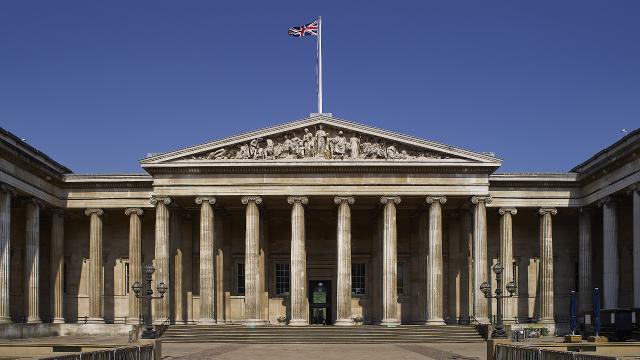The British Museum

The British Museum: A Window into the World’s History
The British Museum is more than just a tourist destination—it’s a global treasure trove of human history and culture. Located in central London, this iconic institution welcomes millions of visitors every year, offering them the chance to explore artifacts from nearly every era and region of the world. Whether you’re passionate about ancient civilizations or simply curious about our shared past, the British Museum offers something truly unique.
A Brief Look at the Origins of the British Museum
The British Museum was established in 1753 and officially opened to the public in 1759. It began with the personal collection of Sir Hans Sloane, a physician and collector whose passion for knowledge laid the foundation for one of the world’s greatest museums. His collection included books, manuscripts, natural specimens, and antiquities from around the world.
From these humble beginnings, the museum grew rapidly—acquiring major artifacts through exploration, trade, and excavation during the height of the British Empire.
What Makes the British Museum Special?
Unlike many other museums that focus on a single theme or time period, the British Museum covers a wide span of history—over two million years of it. Its collection includes more than eight million objects, although only a fraction is on display at any given time.
Here are a few reasons why the British Museum stands out:
- Global Coverage: Exhibits from Africa, Asia, the Americas, Europe, and the Middle East.
- Free Entry: General admission is free, staying true to its mission of education and accessibility.
- Architectural Beauty: The museum itself, especially the Great Court, is an architectural masterpiece.
Must-See Exhibits at the British Museum
If you’re planning a visit, don’t miss these world-renowned highlights:
1. The Rosetta Stone
Discovered in Egypt in 1799, the Rosetta Stone is one of the most famous artifacts in the British Museum. It was key to deciphering Egyptian hieroglyphs, unlocking the secrets of ancient Egypt.
2. The Parthenon Sculptures
Often referred to as the Elgin Marbles, these classical Greek marble sculptures once adorned the Parthenon in Athens. Their presence in the British Museum has sparked global debates on cultural repatriation.
3. Ancient Egyptian Mummies
The museum’s extensive collection of mummies and burial items provides deep insight into ancient Egyptian beliefs and burial practices.
4. The Assyrian Lion Hunt Reliefs
These large stone panels depict royal hunting scenes and are among the finest examples of ancient Assyrian art.
Visiting the British Museum: What You Need to Know
Planning a visit? Here’s what you should keep in mind:
- Location: Great Russell Street, London WC1B 3DG
- Opening Hours: Typically open daily from 10:00 AM to 5:00 PM; check the official website for updates.
- Admission: Free for all, though temporary exhibitions may charge a fee.
- Tours and Guides: Self-guided tours and multimedia guides are available to enhance your visit.
The British Museum and Cultural Debate
While the British Museum is celebrated worldwide, it has also faced criticism regarding the origins of some artifacts. Countries like Greece, Nigeria, and Egypt have requested the return of specific items, claiming they were taken during periods of colonial rule.
The museum argues that it serves as a global center for learning, preserving artifacts for international audiences. This ongoing conversation has sparked important debates about ownership, ethics, and the role of museums in a post-colonial world.
Final Thoughts
The British Museum remains one of the most important cultural institutions on the planet. It offers a rare opportunity to experience the depth and diversity of human history—all under one roof. From ancient empires to modern societies, the museum’s exhibits connect visitors with the past in a meaningful and educational way.
Whether you’re visiting London or exploring online, the British Museum is well worth your time. It’s not just a museum—it’s a journey through time.
Certainly! Here’s a Frequently Asked Questions (FAQ) section tailored to the British Museum article. It’s informative, original, and naturally uses the keyword “British Museum” throughout.
Frequently Asked Questions (FAQ) About the British Museum
1. Where is the British Museum located?
The British Museum is located in the Bloomsbury area of London, England. The full address is:
Great Russell Street, London WC1B 3DG, United Kingdom.
2. Is admission to the British Museum free?
Yes, general admission to the British Museum is completely free. However, some special exhibitions or events may require a paid ticket.
3. What are the British Museum’s opening hours?
The museum is typically open daily from 10:00 AM to 5:00 PM. On Fridays, it often stays open later, until around 8:30 PM, but it’s always best to check the official website for current hours and any holiday closures.
4. What are the most famous artifacts in the British Museum?
Some of the most well-known items in the British Museum include:
- The Rosetta Stone
- The Parthenon Sculptures (Elgin Marbles)
- Ancient Egyptian Mummies
- The Lewis Chessmen
- Assyrian Lion Hunt Reliefs
5. How long does it take to tour the British Museum?
A full tour of the British Museum could take an entire day or more due to its size and the number of exhibits. For a shorter visit, plan at least 2–3 hours to see the highlights.
6. Can I take photos inside the British Museum?
Yes, photography is generally allowed for personal, non-commercial use. However, flash photography and tripods are not permitted. Some temporary exhibitions may have specific restrictions.
7. Does the British Museum offer guided tours?
Yes, the British Museum offers a range of guided tours, audio guides, and themed trails. Visitors can also join spotlight tours, which focus on specific artifacts or galleries.
8. Is the British Museum accessible for people with disabilities?
Absolutely. The British Museum is fully accessible, with step-free entrances, elevators, accessible restrooms, and wheelchair services. Assistance dogs are also welcome.
9. Are there restaurants or cafes in the British Museum?
Yes, the museum has several dining options, including a café in the Great Court and a restaurant offering hot meals, snacks, and drinks.
10. Can I visit the British Museum online?
Yes! The British Museum offers an impressive virtual collection and online exhibitions on its official website, allowing people around the world to explore from home.




